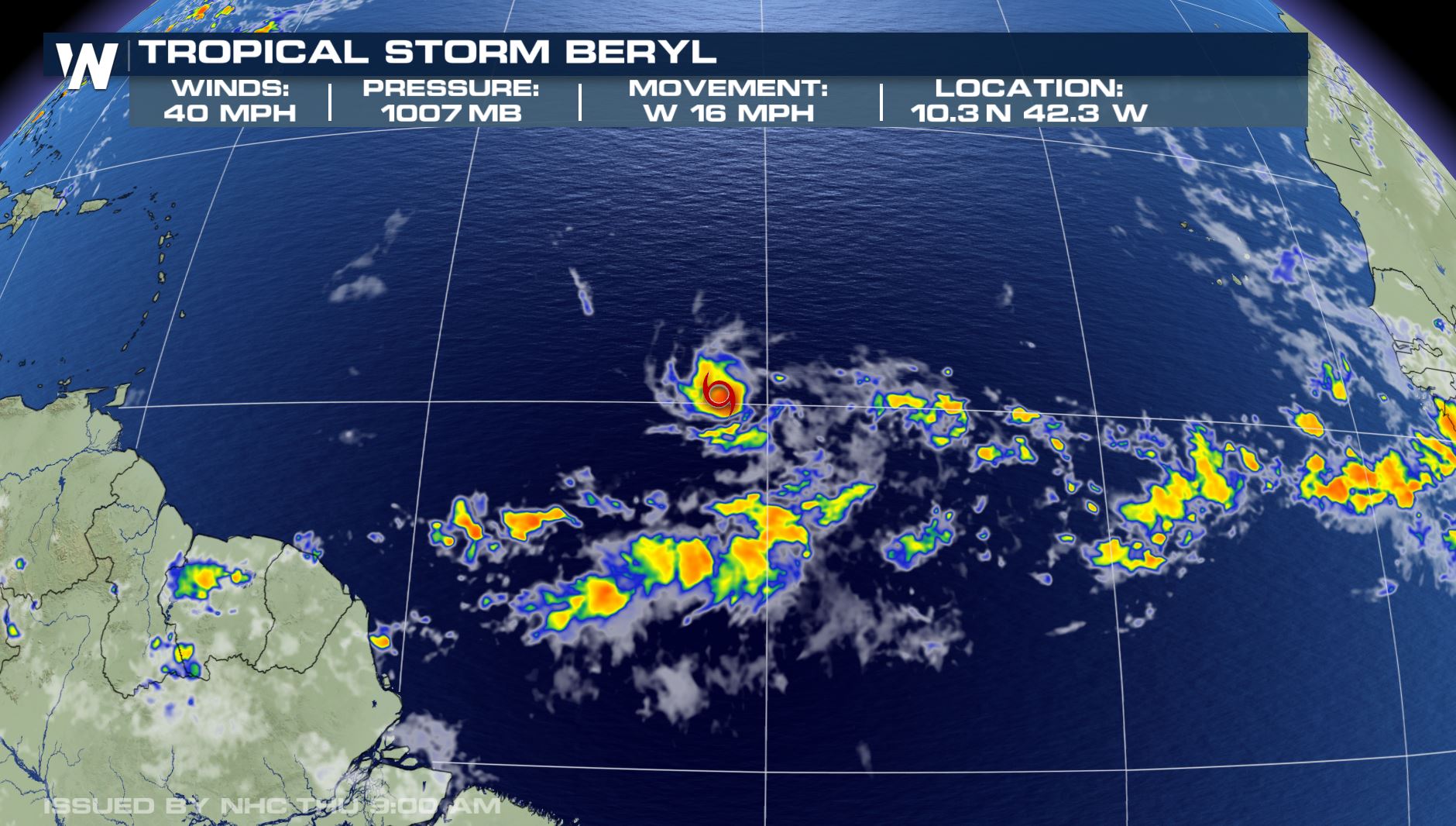Storm Beryl’s Trajectory
Storm beryl path – Storm Beryl, a tropical storm that formed over the Atlantic Ocean, is currently moving towards the Lesser Antilles. The storm is expected to strengthen into a hurricane as it approaches the Caribbean Sea.
Storm Beryl continue to bring heavy rainfall to the Windward Islands as it moves through the Caribbean. The storm is expected to weaken as it approaches the Lesser Antilles, but it could still bring flooding and landslides to the region.
Residents in the path of the storm are urged to take precautions and stay informed about the latest forecasts.
As of [current date], Storm Beryl is located about 1,000 miles east of the Lesser Antilles. The storm has maximum sustained winds of 60 mph and is moving west-northwest at 15 mph.
Predicted Path, Storm beryl path
The National Hurricane Center (NHC) has issued a tropical storm warning for the Lesser Antilles, including Guadeloupe, Martinique, Dominica, and St. Lucia. The NHC predicts that Storm Beryl will continue to move west-northwest and could reach the Lesser Antilles by [date].
Storm Beryl be blowin’ strong, and we be keepin’ an eye on its path. To get the best idea of where it might go, we be checkin’ out the tropical storm beryl spaghetti models. These models show us a bunch of possible paths the storm could take, so we can be prepared for whatever it throws our way.
Back to Storm Beryl path, we be watching closely and staying safe.
The storm is then expected to turn north and move along the coast of Puerto Rico and Hispaniola. The NHC predicts that Storm Beryl could make landfall in Florida by [date].
Potential Impacts
Storm Beryl is expected to bring heavy rain, strong winds, and storm surge to the Lesser Antilles, Puerto Rico, Hispaniola, and Florida. The storm could also cause flooding, landslides, and power outages.
Residents in these areas should monitor the storm’s progress and be prepared to take action if necessary.
Potential Impacts of Storm Beryl: Storm Beryl Path
Storm Beryl has the potential to bring significant impacts to the areas in its path. It is essential for residents to be aware of the risks and hazards associated with the storm and to take necessary precautions to ensure their safety and well-being.
The storm is expected to bring heavy rainfall, which can lead to flooding in low-lying areas. Additionally, strong winds can cause damage to buildings, trees, and power lines, resulting in power outages. It is crucial for residents to prepare for these potential impacts and to take steps to minimize the risks.
Areas Likely to be Affected
The areas most likely to be affected by Storm Beryl include the coastal regions of Florida, Georgia, and South Carolina. The storm is expected to make landfall in Florida and then move up the coast, bringing heavy rainfall and strong winds to these areas.
Risks and Hazards
The primary risks and hazards associated with Storm Beryl include:
- Flooding: Heavy rainfall can lead to flooding in low-lying areas, which can damage homes, businesses, and infrastructure. It is important for residents to be aware of the flood risk in their area and to take steps to protect their property.
- Wind damage: Strong winds can cause damage to buildings, trees, and power lines. Residents should secure loose objects around their homes and businesses and be prepared for power outages.
- Power outages: Strong winds can damage power lines, resulting in power outages. Residents should have a plan in place for how they will handle a power outage, including having a battery-powered radio and flashlights.
Recommendations for Residents
Residents in affected areas should take the following steps to prepare for the arrival of Storm Beryl:
- Stay informed: Monitor weather forecasts and official updates from local authorities to stay informed about the storm’s track and intensity.
- Secure your property: Secure loose objects around your home and business, such as outdoor furniture, grills, and trash cans. Trim trees and remove any dead or overhanging branches.
- Stock up on supplies: Stock up on non-perishable food, water, and other essential supplies in case of power outages or flooding.
- Have a plan: Develop a plan for what you will do if you need to evacuate your home. Identify a safe place to go and have a way to get there.
Tracking and Monitoring Storm Beryl

Tracking and monitoring the progress of Storm Beryl is crucial for timely preparation and response. Various methods are employed to gather data and provide updates on the storm’s location, intensity, and projected path.
These methods include satellite imagery, weather balloons, and radar, which provide valuable information to meteorologists and emergency management officials.
Data Collection and Analysis
Satellite imagery allows meteorologists to observe the storm’s structure, cloud patterns, and movement. Weather balloons collect data on atmospheric conditions, including temperature, pressure, and wind speed, providing insights into the storm’s intensity and direction.
Radar technology is used to track the storm’s precipitation and identify areas of heavy rainfall, which can help predict potential flooding and other hazards.
Latest Updates and Timeline
| Date/Time | Location | Intensity | Projected Path |
|---|---|---|---|
| July 5, 12:00 PM | 200 miles east of the Lesser Antilles | Tropical Depression | West-northwest at 15 mph |
| July 6, 6:00 AM | 100 miles east of Puerto Rico | Tropical Storm | West-northwest at 18 mph |
| July 7, 12:00 PM | Near the coast of the Dominican Republic | Category 1 Hurricane | West-northwest at 20 mph |
This table provides the latest updates on Storm Beryl’s location, intensity, and projected path. As the storm progresses, these updates will be revised and disseminated to the public through various channels, including weather forecasts, news reports, and emergency alerts.
